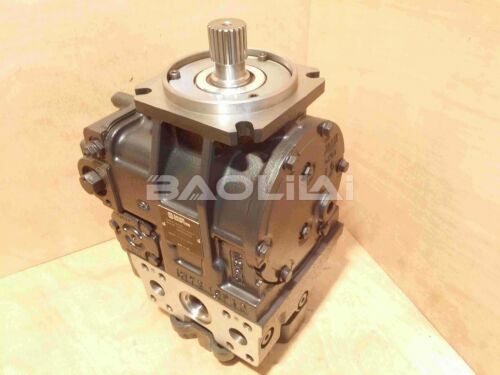The depth at which an oil well plunger pump is submerged in the fluid can have a significant impact on the efficiency of the pump
The depth to which an oil well plunger pump is submerged in the fluid can have a significant impact on the efficiency of the pump. The following are key factors to consider regarding the effect of immersion on pump efficiency:
1. Cavitation: Immersion helps prevent cavitation, which is the formation of vapor bubbles due to low pressure areas in the pump. Cavitation can result in reduced pump efficiency, increased pump component wear, and potential damage to the pump. By fully submerging the pump, the fluid provides positive suction pressure, reducing the risk of cavitation and maintaining efficient pump operation.
2. Net Positive Suction Head (NPSH): Submersion affects the Net Positive Suction Head (NPSH) available at the pump inlet. NPSH is a measure of the head available at the pump inlet, which is necessary to prevent cavitation. Higher immersion levels generally result in higher NPSH, ensuring adequate fluid pressure at the inlet and promoting efficient pump performance.
3. Pump start-up: Submersion plays a vital role in the pump start-up process. Priming involves filling the pump and suction line with fluid to remove any air or air pockets, ensure continuous fluid flow and prevent air from binding. Sufficient immersion allows for easier priming and promotes efficient pump startup and operation.
4. Pump Efficiency: Submersion will affect the overall efficiency of the pump. When the pump is fully submerged, there is less resistance during suction, increasing pump efficiency. Insufficient immersion will result in increased friction losses, reduced pump performance and reduced efficiency.
90-R-055-KP-1-BC-80-P-4-S1-C-03-GBA-38-38-24 90R055KP1BC80P4S1C03GBA383824
90-R-055-KP-1-BC-80-P-4-S1-C-03-GBA-35-35-20 90R055KP1BC80P4S1C03GBA353520
90-R-055-KP-1-BC-80-P-4-S1-C-03-GBA-23-23-24 90R055KP1BC80P4S1C03GBA232324
90-R-055-KP-1-BC-80-P-3-S1-D-03-GBA-42-42-24 90R055KP1BC80P3S1D03GBA424224
90-R-055-KP-1-BC-80-P-3-S1-D-03-GBA-32-32-24 90R055KP1BC80P3S1D03GBA323224
90-R-055-KP-1-BC-80-P-3-S1-D-00-GBA-40-40-24 90R055KP1BC80P3S1D00GBA404024
90-R-055-KP-1-BC-80-P-3-S1-C-03-GBA-35-35-24 90R055KP1BC80P3S1C03GBA353524
90-R-055-KP-1-BC-80-P-3-S1-C-03-GBA-29-29-24 90R055KP1BC80P3S1C03GBA292924
90-R-055-KP-1-BC-80-P-3-S1-C-00-GBA-38-38-24 90R055KP1BC80P3S1C00GBA383824
90-R-055-KP-1-BC-80-L-4-S1-C-03-GBA-29-29-24 90R055KP1BC80L4S1C03GBA292924
90-R-055-KP-1-BC-60-S-4-C6-C-03-EBC-35-35-24 90R055KP1BC60S4C6C03EBC353524
90-R-055-KP-1-BC-60-S-3-S1-D-05-GBA-42-42-24 90R055KP1BC60S3S1D05GBA424224
90-R-055-KP-1-BC-60-S-3-S1-C-03-GBA-20-20-24 90R055KP1BC60S3S1C03GBA202024
90-R-055-KP-1-BC-60-R-3-S1-C-03-GBA-29-29-20 90R055KP1BC60R3S1C03GBA292920
90-R-055-KP-1-BC-60-P-4-S1-C-03-GBA-23-23-24 90R055KP1BC60P4S1C03GBA232324
90-R-055-KP-1-BC-60-P-3-S1-D-03-GBA-35-35-26 90R055KP1BC60P3S1D03GBA353526
90-R-055-KP-1-BC-60-P-3-S1-C-03-GBA-32-32-24 90R055KP1BC60P3S1C03GBA323224
90-R-055-KP-1-BC-60-P-3-C6-C-03-GBA-42-42-24 90R055KP1BC60P3C6C03GBA424224
90-R-055-KP-1-BC-60-P-3-C6-C-03-GBA-35-35-28 90R055KP1BC60P3C6C03GBA353528
90-R-055-KP-1-BC-60-L-3-S1-C-03-GBA-35-35-24 90R055KP1BC60L3S1C03GBA353524

5. Liquid level changes: Liquid level changes, especially in oil wells, will affect the degree of submersion and thus affect the efficiency of the pump. Fluctuations in fluid level cause variations in NPSH, affecting the pump's ability to maintain optimum performance and efficiency. Monitoring and accounting for fluid level changes is critical to optimizing pump immersion and efficiency.
6. Pump size and design: Submersion requirements may vary by pump size and design. Different pump configurations have specific immersion recommendations to ensure efficient operation. It is critical to refer to the manufacturer's guidelines or consult a pump expert to determine the ideal immersion level for a given pump design.
7. Suction piping configuration: The submergence level will affect the suction piping configuration, such as the location and length of the suction line. Proper suction line design, including immersion depth, helps minimize frictional losses, maintain adequate NPSH and optimize pump efficiency.
8. Pump discharge pressure: Submersion will affect the discharge pressure of the pump. The immersion depth determines the pressure at the pump inlet, which in turn affects the overall discharge pressure. Maintaining a proper level of immersion ensures consistent inlet pressure for stable and efficient pump operation.
9. Fluid properties: The degree of immersion will affect the performance of the pump, depending on the properties of the fluid being pumped. Factors such as fluid viscosity, density, and temperature affect immersion requirements for optimum pump efficiency. These fluid properties must be considered when determining the appropriate immersion depth.
10. Pump Operating Range: Different pump designs have specific operating ranges, including immersion requirements, for optimum efficiency. Make sure the pump is operating within the recommended range, including proper immersion levels, to achieve maximum efficiency and avoid potential problems such as cavitation or excessive energy consumption.
11. Submergence Control: In some cases, it may be necessary to control the submergence level to maintain pump efficiency. This can be achieved through various methods such as adjustable immersion devices, level controllers or monitoring systems that regulate the level of fluid around the pump. Effective flood control helps ensure consistent pump performance and efficiency.
90-R-055-KP-1-BB-80-R-3-S1-C-03-EBC-35-35-24 90R055KP1BB80R3S1C03EBC353524
90-R-055-KP-1-BB-60-S-3-S1-C-03-GBA-23-23-20 90R055KP1BB60S3S1C03GBA232320
90-R-055-KP-1-BB-60-R-4-S1-C-03-GBA-35-35-24 90R055KP1BB60R4S1C03GBA353524
90-R-055-KP-1-BB-60-R-3-S1-C-03-GBA-38-38-24 90R055KP1BB60R3S1C03GBA383824
90-R-055-KP-1-AB-80-S-3-S1-C-03-GBA-35-35-24 90R055KP1AB80S3S1C03GBA353524
90-R-055-KP-1-AB-80-R-4-S1-D-03-GBA-26-26-24 90R055KP1AB80R4S1D03GBA262624
90-R-055-KP-1-AB-80-P-4-S1-C-03-GBA-35-35-24 90R055KP1AB80P4S1C03GBA353524
90-R-055-KP-1-AB-80-P-3-S1-D-03-GBA-42-42-24 90R055KP1AB80P3S1D03GBA424224
90-R-055-KP-1-AB-80-P-3-S1-D-03-GBA-29-29-24 90R055KP1AB80P3S1D03GBA292924
90-R-055-KP-1-AB-80-P-3-S1-D-03-EBC-32-32-24 90R055KP1AB80P3S1D03EBC323224
90-R-055-KP-1-AB-80-P-3-S1-D-00-GBA-26-26-24 90R055KP1AB80P3S1D00GBA262624
90-R-055-KP-1-AB-80-P-3-S1-C-03-GBA-20-20-24 90R055KP1AB80P3S1C03GBA202024
90-R-055-KP-1-AB-80-P-3-S1-C-00-GBA-42-42-24 90R055KP1AB80P3S1C00GBA424224
90-R-055-KP-1-AB-60-S-3-S1-D-00-GBA-17-17-20 90R055KP1AB60S3S1D00GBA171720
90-R-055-KP-1-AB-60-S-3-S1-C-03-GBA-26-26-24 90R055KP1AB60S3S1C03GBA262624
90-R-055-KP-1-AB-60-S-3-S1-C-00-GBA-17-17-20 90R055KP1AB60S3S1C00GBA171720
90-R-055-KP-1-AB-60-R-3-S1-C-03-GBA-42-42-24 90R055KP1AB60R3S1C03GBA424224
90-R-055-KP-1-AB-60-P-3-C6-C-03-GBA-35-35-24 90R055KP1AB60P3C6C03GBA353524
90-R-055-KP-1-AB-60-L-3-S1-D-03-GBA-42-42-24 90R055KP1AB60L3S1D03GBA424224
90-R-055-KP-1-AB-60-L-3-S1-C-03-GBA-42-42-24 90R055KP1AB60L3S1C03GBA424224
12. System considerations: The immersion requirements should be evaluated within the scope of the entire pumping system. Factors such as piping size, suction and discharge configuration, and overall system layout can affect flooding levels and thus pump efficiency. Proper system design and optimization are critical to achieving efficient pump operation. 13. Operating Conditions: Depending on the specific operating conditions of the well, immersion requirements may vary. Factors such as well depth, fluid level variation, production rate and system pressure requirements affect the optimum immersion depth for efficient pump performance. Perform a thorough assessment of operating conditions to determine the appropriate immersion level. 14. Monitoring and Maintenance: Regular monitoring of inundation levels and routine maintenance of pumps and related components are essential to ensure continued high efficiency. Regular inspections, level measurements and maintenance activities help to identify any submersion related issues and resolve them promptly to maintain optimum pump efficiency. By considering these factors and taking appropriate steps to maintain optimum immersion levels, the efficiency of your oil well plunger pump can be improved. Proper immersion ensures stable inlet pressure, prevents cavitation, and promotes smooth pump operation. It is recommended to consult a pump manufacturer, industry expert or engineering professional familiar with well pumping systems for specific guidance and recommendations for your application.
This article is published by the official website of Baolilai Hydraulics, please contact the author and indicate the source for reprinting:https://www.baolilai-pump.cn/news/814.html






